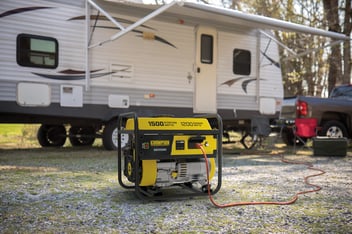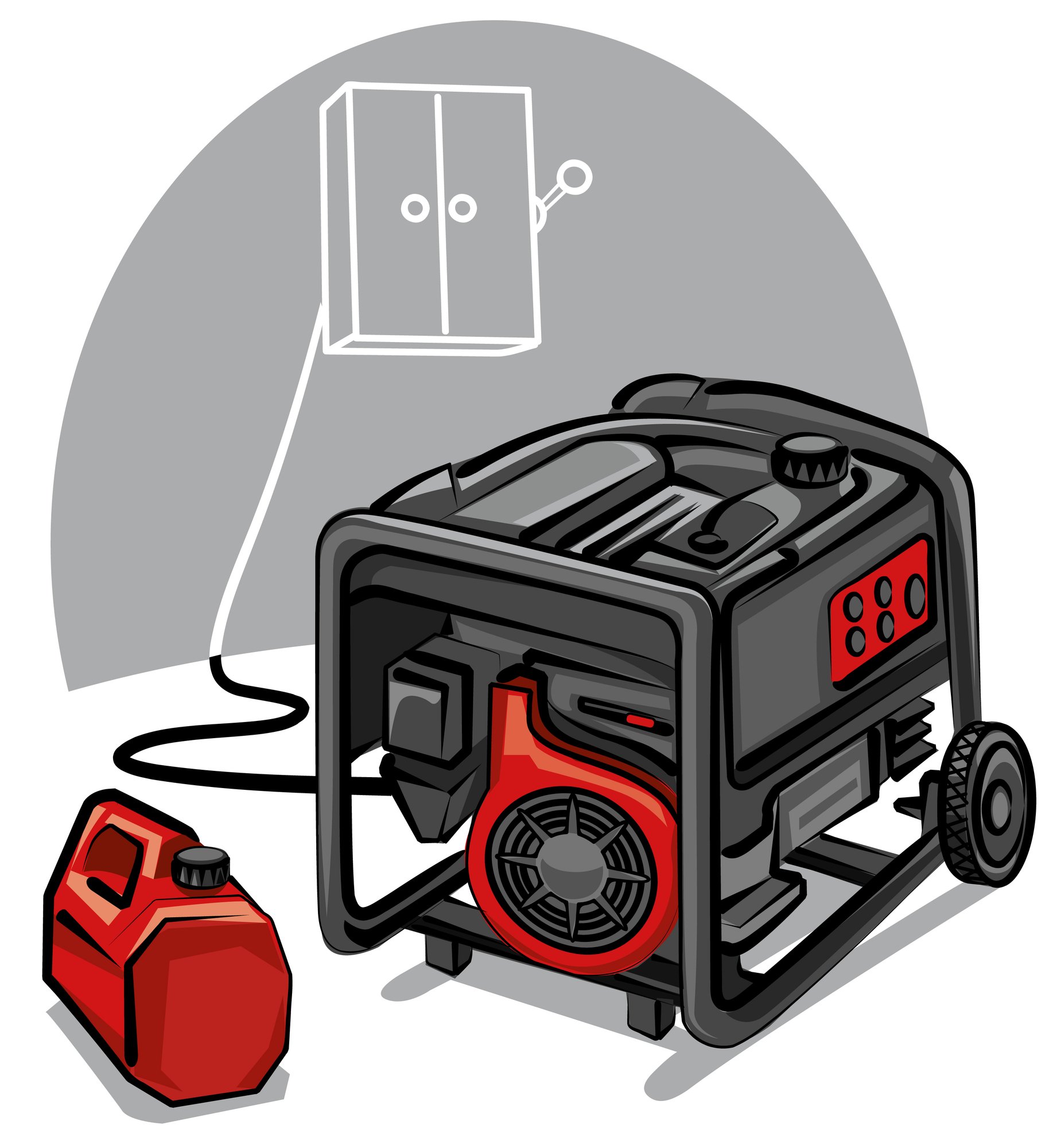Most standby and portable generators have a number in their model name, which many customers assume is the wattage the unit provides. However this isn’t exactly the case. Every standby or portable generator has two wattage values that represent: running watts and starting watts.
What do these terms mean? Do they differ? How do these answers impact your standby or portable generator purchase? In this article Generator Mart will walk you through some basics while then expanding on the differences between running and starting watts, concluding with providing advice on how to choose the correct wattage for your standby or portable generator.
Work Formula:
W=F⋅d
W = Work done (Joules), F = Force (Newtons), d = Distance (meters)
The above formula illustrates the following results: It takes more energy to move a heavy object than a light object, heavier objects need more energy to move further and vice versa. This is regardless if the energy is being provided by a human or a machine.
However, the formula does not address time differences amongst moving any object instantly, in a few minutes, or a few hours. Thus to more accurately understand effort, we need to account for the time over which the work is performed. This measurement is know as power, which is measured in watts.
Human Power Formula:
P=Wt
P=Power (Watts), W=Work done (Joules), t=Time taken to do the work (seconds)
Humans and machines perform the same work but through different means. Thus the mathematical formula will be different for each source. Electrical power shall be calculated by multiplying current (amps) and voltage (volts). Human watts and machine watts can move the same object across the same distance over the same amount of time.
Electrical Power Formula:
P=I⋅V
Where P=Power (Watts), I=Current (Amps), V=Voltage (Volts)
Differences Between Starting and Running Watts in a Standby or Portable Generator
There are important differences for both portable generators and standby generators regarding starting and running watts – let’s dive in!
- Starting watts represent the total wattage needed to get the generator running. A standby or portable generator can provide the starting watts temporarily, in a quick surge.
- Running watts represent the wattage necessary to keep a standby or portable generator running. The generator will provide this wattage continuously.
When thinking from a physics perspective, it takes less effort (watts) to keep a standby or portable generator running than to actually get the unit started. This is why the starting watts are higher than the running watts.
How to choose the correct wattage for your standby or portable generator?
The majority of standby and portable generator manufacturers choose to display the starting watts as the primary metric on all advertising and packaging material. You’ll have to dive deeper into the generator’s product specs to understand what the running watts is for your standby or portable generator. It may seem confusing to customers in understanding starting vs running watts but the metrics are for our own good as they help users overcome unwanted circuit breaks.
Follow this process to figure out the correct wattage for your needs:
- Add up all the running watts across all the appliances you want to power. This number represents your running watts. Generator Mart recommends this total value should equate to approximately 75% of the running watts to adhere to runtimes listed in the standby or portable generator’s specs.
- Additionally add the largest starting watts from the appliances you want to power. This number is your maximum starting watts which must be below the starting watt spec for your specific standby or portable generator.
- Search through our product database using the filter ‘Rated Power’ to showcase starting watt generators.
How to find the running and starting watts for your appliances?
Before you figure out the running and starting watts on your standby or portable generator, it’s important to understand the type of electrical load that they represent which will help determine if you need additional starting watts.

The three main types of electric loads are:
- Resistive load: The most basic type of load and is effectively used to convert an electrical current to heat.
- Capacitive load: These loads are stored in the device’s components and are commonly found in electronic circuits.
- Inductive load: This load type is generated by all devices that contain moving parts along with any device that has a coil of wire which produces a magnetic field.
Devices that fall under the resistive load include kettles, light bulb, radiant heater, etc. along with any devices under the capacitive load which include cell phone charger, laptop etc. are simple to calculate the wattage necessary for your standby or portable generator. Under these two categories your device won’t need additional starting watts. Thus you calculate the necessary running watts by multiplying amps by volts.
Devices that fall under the inductive load category commonly feature an electric motor or a compressor. In such scenarios Generator Mart recommends contacting the appliance’s manufacturer inquiring about the running and starting watts and/or work with a local electrician who can provide these answers.
Conclusion
This article explained that power (wattage) is a great measurement of the effort required to start and run any appliance. Starting something from scratch requires more effort (wattage) than keeping the device running. This fact must be accounted for when deciding what standby or portable generator you want to purchase.
If you still have questions regarding starting or running watts, Generator Mart recommends contacting the appliances manufacturer to understand how many watts each requires. We also recommend working with an electrician when it comes to sizing your standby or portable generator to meet your power needs.
RELATED POSTS
Proin auctor nibh vitae urna lobortis, in vulputate erat facilisis. Sed lacinia lorem eget orci finibus, et maximus nisi sagittis.

Portable Generators And Boondocking 101
Boondocking is a unique lifestyle choice which offers great ways to save money on camping expenses. But how do you power all your devices in a remote...
Read more »
Consumer Generator Basics – Home Standby & Portable Generators
The two questions of “what kind of generator do I need” and “how big of a generator do I need” are the most common areas of concern for people...
Read more »
6 Reasons Why You Should Never Buy The Cheapest Standby Or Portable...
A standby or portable generator is a fantastic investment. Ensuring your family has reliable power when the grid goes down brings peace of mind....
Read more »
